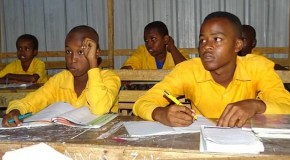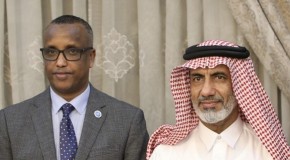In Somalia, the radical Islamist militia, Al-Shabab, that has terrorized much of the country over the past five years, appears to be on the run. They have been forced out of the capital, Mogadishu.
And all of the major towns that were once under their control (including Kismayo in the South). But those who believe the Shabaab are finished could find that they are sorely mistaken.
The eradication of Al-Shabaab, although essential to the peace and security of both Somalia and its neighbours, is unlikely to be achieved by military force alone. What is actually required is a coordinated and sustained regional effort to eliminate the underlying causes of the growth of Islamist radicalism among Somali youth.
Including assistance to effectively address the persistent and structural humanitarian crisis affecting most of Somalia.
Key requirements include improved governance, and concerted efforts to rebuild and expand Somali livelihoods, and the country’s economy.
Most of the current generation of Somalis have grown up in conditions of conflict, insecurity of livelihood and deprivation. This has tended to make many of them vulnerable to the arguments and promises of the Islamist militants.
The new Somali Government must avoid the corruption trap and tendencies towards dividing up the governmental ‘cake’ along clan lines, and focus its efforts on solving the livelihood problems faced by the majority of the country’s population.
The new government must also urgently address humanitarian issues and start the flow of food aid to the areas liberated from Al- Shabaab. The Shabaab alienated large groups of people in southern and central Somalia by allowing them to die of hunger, rather than permit aid organizations to give them food.
If the arrival of food aid, and assistance for reconstruction follows quickly in the tracks of the Kenyan and AMISOM forces, that will strengthen the local constituency for the elimination of Al-Shabaab in the country.
Food aid is a necessary but temporary expedient. It helps to keep people alive, while plans to enable them to earn a livelihood are being made. This is an area in which there is a vital role for the international community to play in putting Somalia back on the road to development and self-reliance.
Along with conflict, drought and desertification are key causes of impoverishment and destitution in large areas of Somalia and adjacent regions of Ethiopia and Kenya.
With an increasing population, there is more pressure on the land and its limited resources. Drought and desertification disasters are occurring at increasingly shorter intervals, with less opportunity for recovery.
Hundreds of thousands of rural households in Somalia and neighbouring regions of Ethiopia and Kenya have lost most of the livestock on which they depend, dropping entire communities into chronic destitution.
news



















Comments are closed.